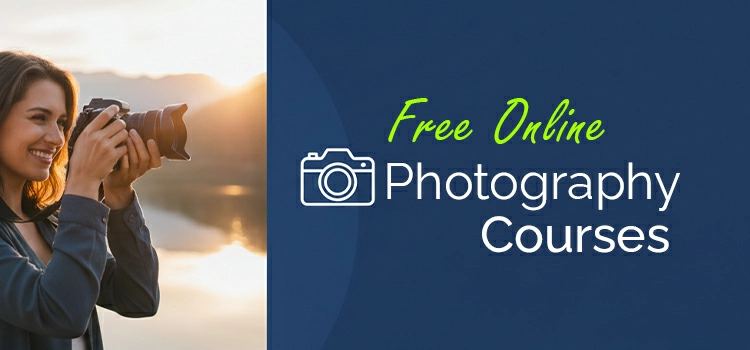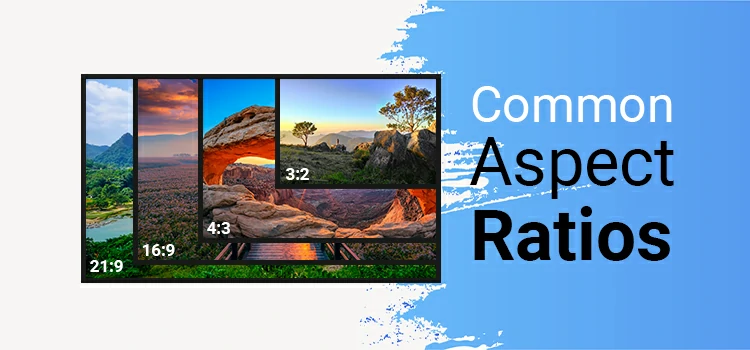Motion Photography: Beginner’s Guide

Motion photography captures energy and movement, like a speeding car, an athlete, or crashing waves. It tells stories through images. You can freeze action or create a blur for artistic effect with the right techniques.
This beginner guide will explain shutter speed and how to pick the right settings. Our goal? To help you capture motion and make your photos vibrant. Let’s dive in!
What is Motion Photography?
Motion photography captures moving subjects, showing action in still images. This technique makes photos lively and engaging. You can freeze a moment, like a bird flying. Alternatively, you can create a sense of speed with a blurred background. Motion photography offers the tools for both.
Motion photography focuses on three key elements: subject speed, camera settings, and timing. You can adjust the shutter speed to control motion blur in your images. The challenge and beauty lie in balancing these elements to capture movement perfectly.
Essential Equipment for Motion Photography
Starting in motion photography requires the right gear for quality shots. Here’s a list of essential equipment to shoot motion like a pro:
Camera:

A DSLR or mirrorless camera is best. It offers control over shutter speed, aperture, and ISO. Choose models with manual mode and fast continuous shooting to capture multiple frames quickly.
Lenses:

Zoom lenses are ideal for motion photography. They let you frame moving subjects without moving. A lens with a wide aperture, like f/2.8 or f/4, is best for low light. It also creates a nice background blur.
Tripod/Monopod:

For motion blur with slow shutter speeds, a tripod prevents camera shake and keeps parts sharp. For sports or fast subjects, a monopod offers stability and freedom to move.
Remote Shutter Release:

This accessory helps eliminate minor shakes from pressing the shutter button. It’s especially useful for slow shutter speeds and long exposures.
Filters (Optional):
Neutral density (ND) filters reduce the light hitting the sensor. They let you use slower shutter speeds in bright conditions. This is useful for capturing motion blur in daylight.
Shutter Speed: The Key to Motion Photography
Shutter speed is key in motion photography. It dictates how long the camera sensor captures light. This setting allows you to freeze action or blur movement. Knowing how to adjust it gives you control over motion in your pictures.
- Freezing Action: To photograph fast-moving subjects like runners or cars, use a quick shutter speed, about 1/500th of a second or faster. This speed “freezes” motion, making it invisible in the image. It’s perfect for action scenes where you want clear details.
- Creating Motion Blur: To suggest speed or movement, use a slower shutter speed. Speeds of 1/30th of a second or less blur moving objects artistically. This method suits capturing light trails, flowing water, or cars in motion.
- Finding the Right Balance: Choose the right shutter speed for your shot. Too slow? The image blurs. Too fast? You lose motion. Adjust it to match the action and desired effect.
Types of Motion Photography Techniques
Motion photography offers techniques to capture movement creatively. Each method adds a distinct style and effect. Let’s look at the three most common techniques.
1. Freezing Action

Freezing action captures fast-moving subjects clearly. It’s perfect for sports, wildlife, or any split-second moment. Use a shutter speed of 1/500th second to freeze motion. This avoids blur and keeps the image sharp.
Freezing action is great for scenes like a bird mid-flight, a soccer player kicking a ball, or a car speeding on the highway.
2. Panning

Panning keeps your subject in focus while the background blurs. This adds speed and dynamism to your shots. To pan, move your camera with a moving subject. Use a slow shutter speed, about 1/30th to 1/60th of a second.
This keeps the subject sharp and blurs the background, highlighting motion. Panning works well with subjects moving parallel to you, like cyclists, racing cars, or runners.
3. Motion Blur

Motion blur adds blur to your image. It captures the path of moving objects and creates a dreamy effect. Set your camera to a slow shutter speed (1/30th of a second or slower) and keep the camera steady.
The result is a blurred trail of motion, perfect for showing continuous movement. Motion blur captures car light trails, waterfalls, and busy streets. It emphasizes flow and movement.
Best Camera Settings for Motion Photography
To capture motion well, you must understand and adjust your camera settings. There’s no single best setting for motion photography. However, key settings can improve your results based on the scene and desired effect.
a. Shutter Speed
- Freezing Action: Use a fast shutter speed (1/500th of a second or faster) to capture sharp images of moving subjects. It will prevent blur.
- Motion Blur or Panning: A slower shutter speed, between 1/30th and 1/60th of a second, blurs motion. This effect is noticeable when panning or capturing moving backgrounds.
b. Aperture (f-stop)
- Wide Aperture (Low f-number): Use a wide aperture (f/2.8 to f/5.6) to let in more light. This is perfect for low light or quick shutter speeds. It also blurs the background, highlighting the subject.
- Narrow Aperture (High f-number): For focused scenes like moving landscapes, use a narrow aperture (f/8 to f/16). This reduces light, so adjust other settings accordingly.
c. ISO
- Low ISO: In good light, keep the ISO low (100–400) to reduce noise and preserve image quality.
- High ISO: In low light or for faster shutter speeds, raise the ISO to 800 or higher to brighten the image. However, be careful, as high ISO can add noise to your photos.
d. Autofocus Mode
- Continuous Autofocus (AF-C): Use continuous autofocus to track moving subjects. This keeps them sharp in the frame as they move.
- Single Autofocus (AF-S): Use single autofocus mode to lock focus on still subjects or when you don’t need to track movement.
e. Burst Mode (Continuous Shooting)
- Why Use It: Burst mode lets you take several photos quickly. It boosts your odds of a perfect shot. This is key with fast-moving subjects, like athletes and wildlife.
- How to Enable: Enable continuous shooting mode in your camera’s settings. It will let you capture multiple frames with one press of the shutter button.
f. Metering Mode
- Spot Metering: Perfect for subjects moving through different lighting. It measures exposure in a small frame area, typically around the subject. This ensures the subject is well-lit, even with a much lighter or darker background.
- Evaluative/Matrix Metering: This mode checks the whole scene. It works well for balanced lighting.
Working with Light in Motion Photography
Lighting is key in motion photography. It affects camera settings and image quality. Knowing how to use light helps you capture motion, whether in daylight or low light.
a. Natural Light
- Golden Hour: The golden hour, just after sunrise or before sunset, provides soft, warm light and minimizes harsh shadows.
- Midday Light: Harsh shadows at midday make motion photography tough. Use a fast shutter speed to avoid overexposure.
- Overcast Skies: Cloudy days have soft light, making motion easier to capture.
b. Low Light and Nighttime Motion Photography
- Using Slow Shutter Speeds: In low light, slow shutter speeds create beautiful motion blur and light trails. Use a tripod to avoid camera shake and keep details sharp.
- Raising ISO: In low light, increase ISO to capture movement. However, be careful. ISO above 800 can add unwanted grain. So, balance sensitivity and clarity for the best image.
- Wide Aperture: In dim light, wide apertures from f/2.8 to f/5.6 let in more light. This enables quicker shutter speeds for sharper images.
c. Artificial Light
- Using Flash for Freezing Motion: A timely flash can freeze motion in low light, like indoor sports or night events. It brightens the subject and stops their movement. Meanwhile, the background may blur in low ambient light.
- Continuous Lighting: In controlled environments, like studios, use continuous lights. They provide even lighting. You can then experiment with different shutter speeds for the desired effect.
- Light Trails: In motion photography, use car and streetlight light creatively. Slow your shutter speed to capture light trails. This adds a dynamic, artistic touch to your photos.
d. Balancing Light and Motion
Light affects your settings. In bright light, use fast shutter speeds. In low light, slow down shutter speeds, widen apertures, or increase ISO.
e. Using ND Filters
In bright conditions, like shooting motion blur during the day, a neutral density (ND) filter is useful. It cuts down light entering the camera. This allows for slower shutter speeds, capturing motion blur without overexposing the image.
Practice Tips for Improving Motion Photography
Mastering motion photography takes practice, patience, and experimentation. Here are some tips to get you started:
a. Start with Simple Subjects
- Moving Cars or Bicycles: These subjects are ideal for beginners due to their predictable movement. You can practice freezing action or use panning to capture motion.
- Pets or Kids at Play: These subjects are always on the move. This is a great chance to practice adjusting shutter speeds and focusing on fast-moving targets.
b. Experiment with Shutter Speed
Try different shutter speeds to see their effects on motion. Use 1/1000th of a second to freeze action. For blur, use 1/30th of a second. This will show you how shutter speed changes your image.
c. Practice Panning
To practice panning, first, find a moving subject, such as a cyclist or car. Then, set your shutter speed between 1/30th and 1/60th of a second. Next, focus on the subject and move the camera with them. Finally, press the shutter while following their motion. Your goal is to keep the subject sharp and blur the background.
d. Use Burst Mode for Action Shots
Burst mode, or continuous shooting, is ideal for action photography. It takes several shots quickly, boosting your chances of capturing the perfect moment. Use it for fast subjects, like sports or wildlife photography.
e. Shoot in Different Lighting Conditions
Practice capturing motion in different lights, both natural and artificial. Shoot during golden hour, midday, and at night. This will show you how light affects motion photography. You’ll quickly learn to adjust your settings for the best results.
f. Use a Tripod for Motion Blur Shots
Use a tripod for slow shutter speeds to capture motion blur. This keeps stationary elements sharp and allows moving parts to blur.
g. Review and Analyze Your Shots
After each shoot, review your images. Check for focus, sharpness, and the balance between motion blur and frozen action. Learn from mistakes. Try different settings next time.
h. Practice, Practice, Practice
Motion photography improves with practice. You get better at timing, settings, and capturing moments. So, experiment with techniques and subjects to find your style.
Post-Processing Tips for Motion Photography
Post-processing is key in motion photography. It helps you adjust images to showcase motion or freeze action. Here are vital tips for editing motion photos:
a. Adjust Sharpness and Clarity

- Sharpen Key Details: Use sharpening tools to make your subject clearer, especially in motion. This highlights the main subject and action.
- Dealing with Noise: If you must use a high ISO in low light, reduce noise in post-processing. Use tools like Lightroom or Photoshop. This will keep your image clean and preserve details.
b. Enhance Motion Blur

- Selective Blur: If some parts of your image lack blur, you can add it using Photoshop’s Gaussian Blur filter. This enhances the sense of movement.
- Radial or Directional Blur: These are perfect for showing speed in vehicles or athletes. Apply them to the background to highlight motion while keeping the subject sharp.
c. Crop for Composition

- Focus on the Action: Sometimes cropping the image can improve its overall composition by zooming in on the motion. Remove unnecessary elements that distract from the subject’s movement.
- Straighten the Frame: For panning shots, make sure the horizon and background lines are straight. This will make the motion look more intentional and professional.
d. Adjust Exposure and Contrast
- Balancing Exposure: Motion shots may be overly bright or dark due to rapid lighting changes. Adjust the exposure to recover details in highlights or shadows.
- Boost Contrast: Boost contrast to make the subject stand out from the background. This is especially effective in sports and action shots. It ensures the subject remains the focus.
e. Fine-Tune Colors and Lighting

- Saturation and Vibrance: Boost saturation or vibrance to make colors in motion shots more vivid. This works especially well in outdoor scenes with natural elements, like sunsets or water.
- Fix Lighting Issues: Adjust highlights, shadows, and mid-tones for balanced lighting. Fixing harsh lighting or shadows improves the clarity of motion shots.
f. Use Vignetting to Direct Focus
Add a subtle vignette around your photo’s edges. This draws attention to the center, especially in motion shots, where you want to highlight the movement.
g. Experiment with Black and White

Turning your motion shots black and white removes distractions. It also highlights action and movement. This is particularly effective for high-contrast images or when color isn’t crucial.
h. Retouching Minor Distractions
Use Photoshop’s clone stamp or healing brush to remove distractions, like random people or objects. This will keep the focus on motion and the subject.
i. Exporting for Best Quality
- Choose the Right Format: Save your image in the highest quality to keep details. For sharing, JPEG is fine. However, for printing or top quality, choose TIFF or high-quality PNG.
- Resolution Matters: Always save your images in high resolution. This is crucial for printing or portfolios. Aim for 300 DPI for prints. Use 72 DPI for the web.
Final Thoughts
Motion photography tells stories with images, adding action and energy. You can freeze moments or create motion blur. However, mastering techniques and settings is crucial. With the right gear, a grasp of shutter speed, and practice, you’ll capture great dynamic shots.
Don’t forget, you can improve your images afterward. This lets you tweak details and highlight movement. Like any photography style, key aspects are experimenting, practicing, and enjoying the process.
So, grab your camera, head out, and start capturing moving subjects!







